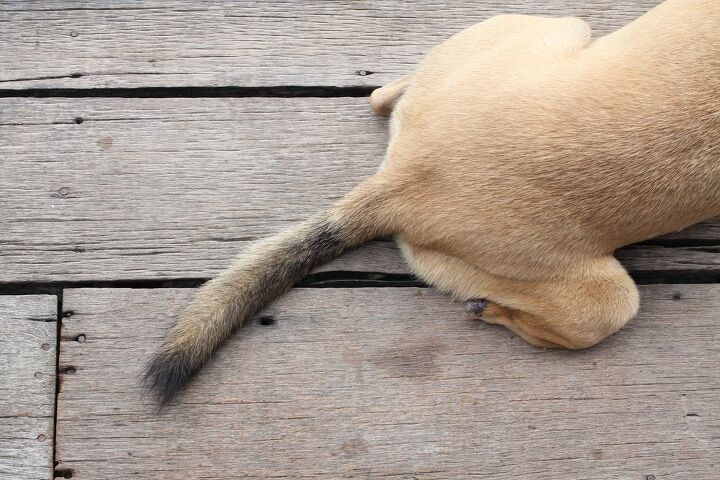What is Limp Tail Syndrome?

We’ve all heard the expression “hang-dog,” right? It refers to someone that’s looking sad, weary and beaten down, with head hung low and shoulders slumped. Well, dogs are no different but instead of it being all about a miserable mood, it’s a physical affliction with a limp tail that just hangs down and makes him look like the weight of the world is on his shoulders. And you’re not going to get a wag out of him if your life depends on it.
Now, if you’re like me the first thing you’re thinking is that he’s feeling sick and just isn’t up to playing the happy, tail-wagging dog. But you’d be wrong. You see, this limp tail is actually an affliction known as Acute caudal myopathy and the causes may surprise you.
Related: Gastritis in Dogs
What specific signs are you looking for? His tail could be limp from tip to base or partially limp, but it will have been hanging down for an extended period of time and it will be clear that wagging isn’t going to happen. It could be painful if you try to move it, and he could whine, whimper or chew at it if he finds it uncomfortable. You may also find him shifting his weight from side to side as he tries to sit or lay down.
Also known as limber tail (as well as swimmer’s tail, limp tail, rudder tail and broken wag)
the cause is actually down to muscle strain from over-use. And while any breed can experience this condition, it’s more common in highly physical breeds such as retrievers, pointers, hounds, beagles or setters – long-tailed dogs of the hunting variety who rely on the strength of the tail for swimming in often cold water.
Related: Can Dogs Get Dementia?
In fact, swimming is the most common cause because that’s where dogs use their tails extensively to help with steering and balance as they maneuver around. Whether it’s a pond or a pool, an over abundance of time spent swimming may result in him temporarily losing the use of his tail.
While over-use is a primary cause of limber tail, it isn’t the only one. In addition to swimming, it can be the result of prolonged crating, physical exertion without proper conditioning and even exposure to cold weather. And like any of us who have enthusiastically over-done a work-out session, the ill effects might not appear immediately, but the morning after.
As with any affliction, you want to be sure to work with your vet to rule out other possible causes such as a fracture, disc problems or impacted anal glands. But once you’ve ruled out these more nefarious causes, the treatment is fairly straightforward. Rest is required along with anti-inflammatory medications or muscle relaxants if your pooch is showing signs of discomfort. He should be back to normal within a few days to a week.
Of course, the tricky part of all this is that you have to prevent your pooch from becoming overly excited and wagging his tail.

Sharing space with three seriously judgy Schnoodles and a feline who prefers to be left alone. #LivingMyBestLife
More by Mary Simpson























